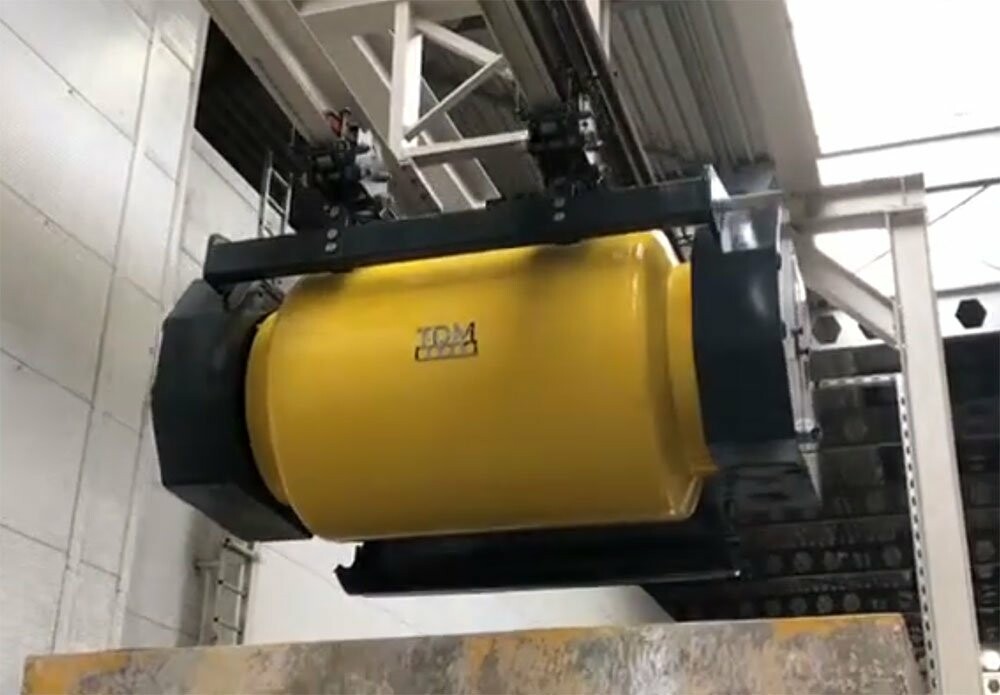Modern technologies of production of reinforced concrete products are constantly improving, striving to improve product quality and reduce costs. One of the key factors determining the strength, durability and performance characteristics of reinforced concrete products is the method of concrete distribution. Concrete distribution is an innovative solution that allows for accurate and timely delivery of concrete mix to the place where products are formed, minimizing material losses and improving its characteristics.
In this article we will consider how concrete distribution affects the quality of reinforced concrete products, what advantages it provides and why enterprises engaged in the production of reinforced concrete structures, actively implement this technology.
What is concrete distribution?
Concrete distribution is a system of concrete mixture delivery from the preparation unit to the place of placement, excluding intermediate stages of processing and storage. Unlike traditional methods of concrete distribution (e.g. transportation in trucks or manual concrete distribution), this technology allows to distribute concrete evenly over the mold, preventing its delamination and reduction of strength properties.

The main concrete distribution systems include:
- Self-Propelled Shuttle, which provide delivery of the mix from the mixer to the paver.
- Portal or semi-portal concrete spreader.
- Rail tracks, for the movement of the self-propelled barrel or paver.
- Control and monitoring system
This technology allows for better control of the concrete placement process, reducing the production time of reinforced concrete products.
How does concrete distribution affect the quality of reinforced concrete products?
1. Preservation of concrete mix properties - One of the main problems with traditional transportation methods is the change in consistency of concrete during delivery. Prolonged storage and transportation causes the mixture to delaminate, causing the final product to lose strength and durability.
Concrete distribution solves this problem by minimizing transportation time and eliminating the influence of external factors. The mixture remains homogeneous, does not lose its mobility and is evenly distributed in the mold, ensuring high quality of the final product.
2. Increase of strength characteristics - Quality reinforced concrete products should have high strength and resistance to external loads. When using concrete distribution, the concrete mixture fills the mold evenly, preventing the formation of voids, sinks and air inclusions.
This is especially important in the production of complex structures such as beams, columns, floor slabs and bridge elements where uniform load distribution is required.
3. Minimize material loss - Conventional concrete transportation methods can lead to mix overruns due to uneven distribution, mortar settling and partial loss of mortar during loading. Concrete distribution minimizes these losses as the batching system precisely regulates the amount of mix entering the forms.
This not only improves the quality of reinforced concrete products, but also reduces the cost of production due to more efficient use of raw materials.
4. Reduced labor and maintenance costs - Concrete distribution automates the mix transportation process, reducing the need for manual labor. This not only speeds up the production process, but also reduces the chance of human error.
In addition, automated delivery reduces the strain on equipment, extending equipment life and reducing maintenance costs.
5. Improved safety conditions on the production floor - Manual transportation of concrete mixes involves increased risks for workers. Using concrete distribution minimizes personnel contact with heavy materials, reduces the likelihood of injury and improves working conditions at the plant.
Economic benefits of concrete distribution
In addition to improving the quality of reinforced concrete products, there are significant economic benefits to implementing concrete distribution:
- Reduced material costs - accurate batching eliminates overconsumption.
- Reduced production time - automated systems speed up concrete placement.
- Reduced personnel costs - fewer workers are required to transport and place the mix.
- Extended equipment life - less strain on machinery reduces wear and tear.
All these factors make concrete distribution a favorable solution for companies seeking to improve the quality of their products and reduce production costs.
Concrete distribution plays a key role in the production of high quality reinforced concrete products. Thanks to accurate and timely concrete distribution of concrete mixture, it is possible to preserve its properties, increase the strength of products, minimize material loss and reduce production costs.
For companies seeking to improve efficiency and competitiveness, the introduction of modern concrete distribution systems is an important step in development. This technology not only improves the quality of the final product, but also increases safety, reduces costs and makes production more environmentally friendly.
In a highly competitive construction market, the use of advanced concrete distribution methods can significantly improve the level of reinforced concrete products, ensuring high standards of quality and durability.

